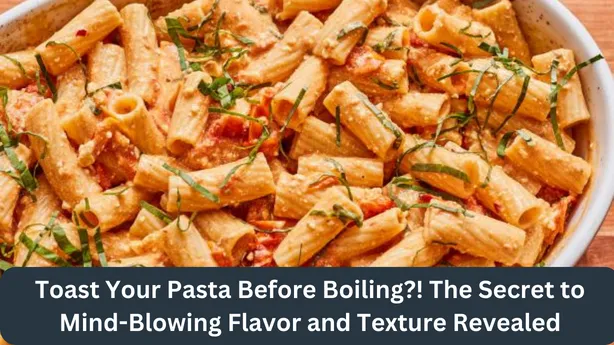Last week, when I prepared lunch for my kids, I decided to cook a dish they adore—fettuccine Alfredo. However, I experimented with a new cooking method that I hadn’t tried before. My goal was to find out if toasting the pasta before boiling could make it taste even better.
I had come across a few sources suggesting that this technique could enhance the pasta’s flavor in a similar way that toasting grains, like quinoa or rice for pilaf, deepens their taste. But I found it a bit unusual—dry pasta toasted without any oil or spices? Could it really turn out well?

I spread out a portion of dried fettuccine on a baking sheet and placed it in the preheated oven at 350 degrees F (177 degrees C) for about 10 minutes, stirring midway. Once it was done, the pasta looked slightly darker, and there were some curious bubbles on the ends.
Taking the toasted pasta, I put it directly into a pot of boiling water seasoned with salt. I followed the cooking time mentioned on the pasta package. During this time, I whipped up an Alfredo sauce using cream, butter, and Parmesan cheese. When I tested a piece of the fettuccine, it had a perfect al dente texture. I gave a piece to my 8-year-old, who commented on how much he enjoyed its chewiness.
What’s the Outcome of Toasted Pasta? When the pasta was ready and coated with the creamy sauce, it turned out to be delicious. The texture was noticeably chewier, not undercooked or overly al dente, but rather more substantial. It seemed like the toasting step prevented it from becoming mushy or overly soft. Both of my kids preferred this version to the usual way of cooking, and they requested that I make it like this again next time—a definite success.
For me, the most significant difference was in the texture rather than the flavor. I chose Alfredo sauce for its mild flavor, as I wanted the pasta’s taste to shine. Although there was a hint of nuttiness, resembling whole wheat pasta, what truly stood out was the perfect texture. Other uncomplicated sauces that would complement this method include butter and Parmesan, no-cook tomato sauce, olive oil with bottarga, or olive oil with garlic and ricotta. You can also try toasting the pasta in a pan, similar to the technique used in this fideo recipe.
Some cooks recommend soaking the toasted pasta in water before boiling it. This involves placing the cooled, toasted pasta in a large resealable bag, adding water, squeezing out any air, and allowing it to sit in the refrigerator for 2 to 3 hours before boiling. Skipping this hydration step might result in the pasta taking longer to cook than regular pasta straight out of the box, and it might not reach the ideal al dente point. I should note that I skipped this additional hydration step, and the results were still great.
